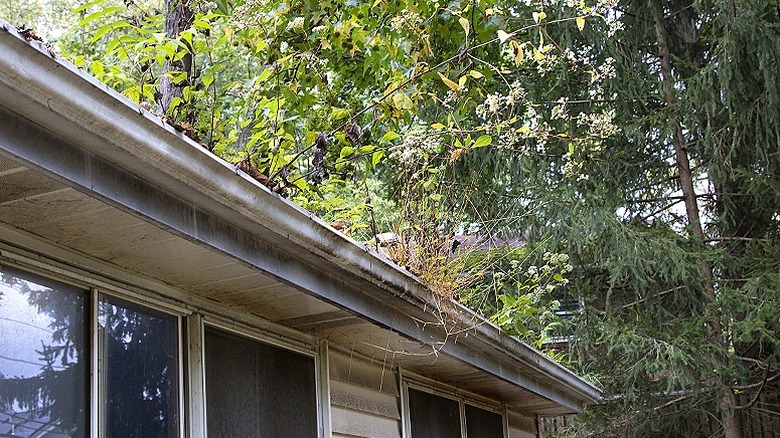Don't Skip This Essential Step When Planting Trees
One of the best ways to improve the look of your property is through planting trees. They provide interesting additions to landscaping, while also helping to conserve energy by adding shade and blocking wind, potentially cutting your air-conditioning costs by 15% or more, according to the Department of Energy. However, when planning to plant trees near your home, it's important to take the essential step of looking around your property and over your head. Specifically, you want to see if you have utility wires above, which a tree could eventually tangle with as it grows.
Although it may be tempting to just start filling any empty space in your yard with trees, you need to consider the space once those trees grow. In the case of utility wires, for example, it could carry a surge of voltage from a lightning strike. And that voltage could travel down a tree that's touching the wire, placing people on the ground in danger. It could start a fire, too.
If, however, you have no choice but to plant underneath overhead wires because of the configuration of your property, select tree species known to only reach a certain height, leaving them several feet away from making contact. As an added advantage, small trees will not overtake your yard, allowing other aspects of your landscaping plan to continue to be noticeable.
Consider distance when planting trees as well
In addition to taking the step of checking for overhead wires when planting trees, you also want to plant trees a safe distance from your home and other structures. Planting a tree too close to your house, a garage, or a shed could cause numerous problems. For instance, roots and branches could damage these structures years in the future as vertical growth occurs, resulting in a common mistake everyone makes when planting a tree. Certain species, meanwhile, have roots that draw an excessive amount of moisture out of the ground, which may cause a shift in the soil, potentially resulting in a weakening of nearby foundations. If your home's foundation buckles, you may notice drywall cracking inside the home.
Before selecting any tree species, make sure you know just how big it will get at maturity. Pay attention to its potential root spread as well. Some extremely large species, like an oak or elm, probably need 50 feet of root clearance from buildings. If you do end up planting too close to the home, you can protect the foundation by installing a root barrier, which blocks the roots from spreading against the foundation.
Further, when the branches of a large tree are close to the roofline of your home, they could press on the gutters, causing them to pop loose or become damaged. They also can drop leaves, seeds, dead branches, and other debris onto the roof, which can lead to clogged gutters, loose shingles, and a dangerous buildup of excessive moisture.

